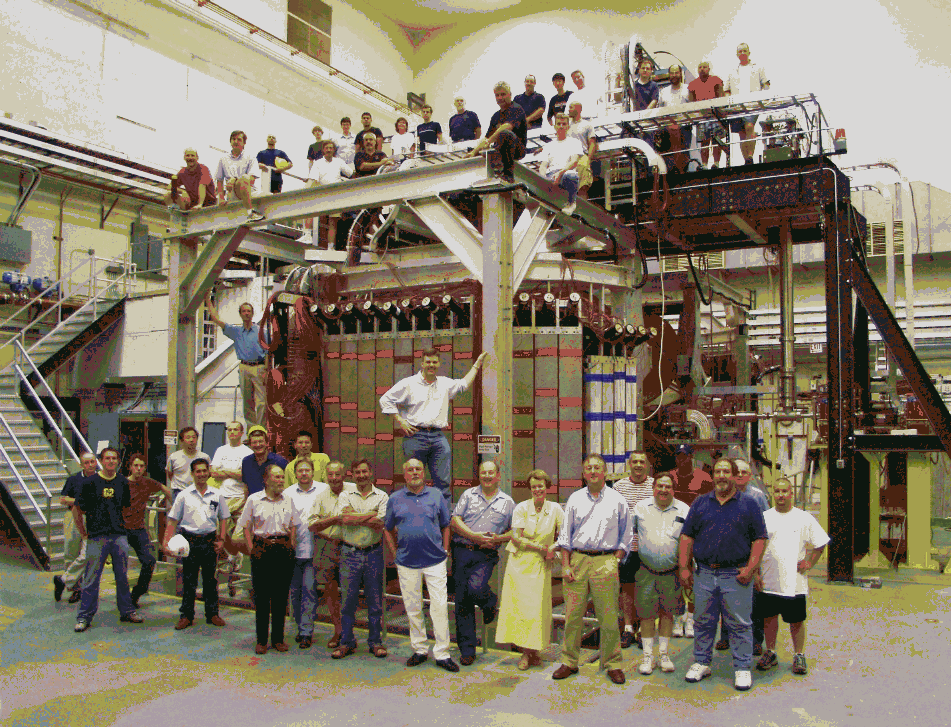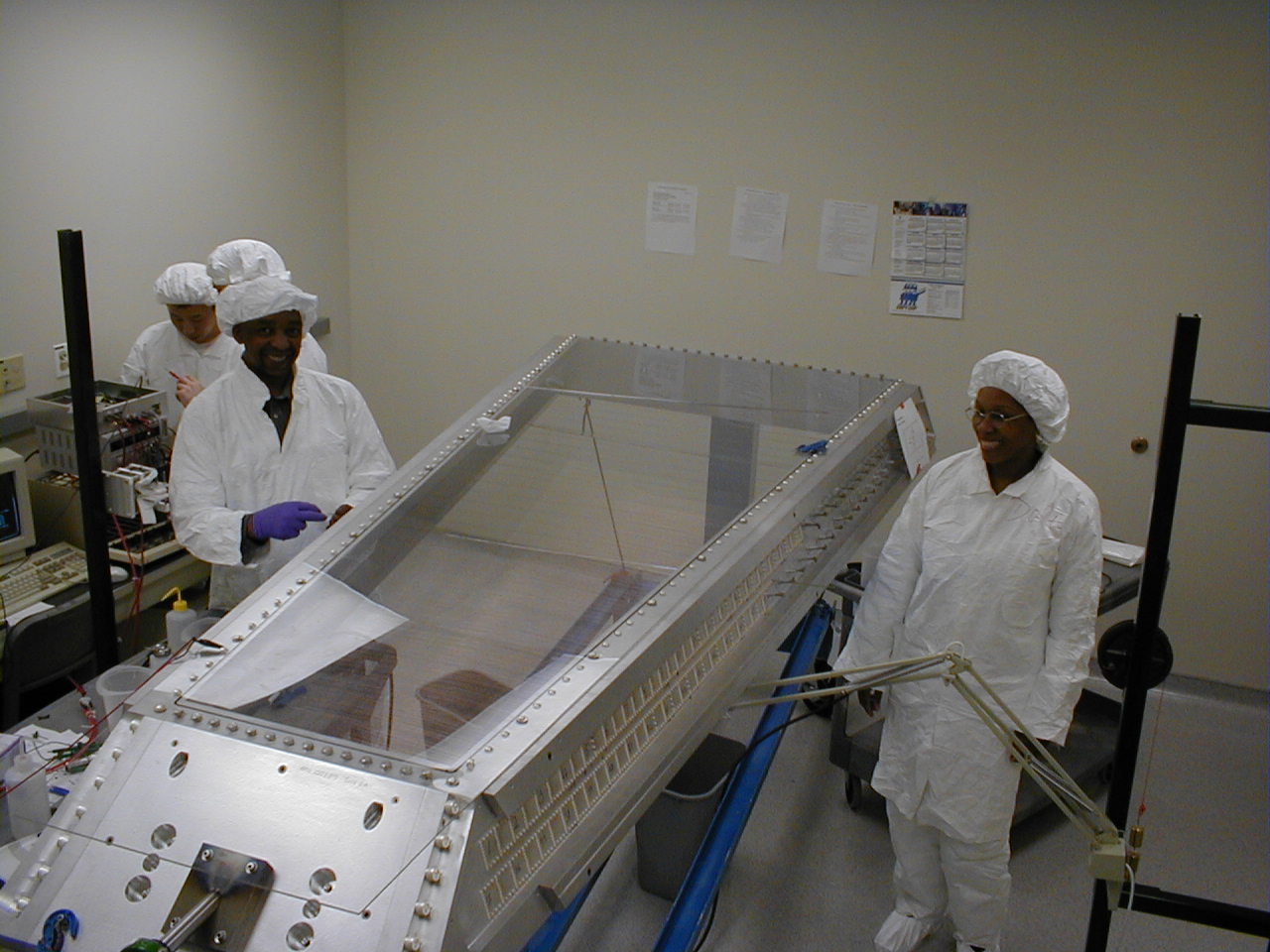The BLAST Experiment ran at the MIT-Bates Linear Accelerator Center situated about 20 miles north of Cambridge in Middleton, Massachusetts. BLAST was designed to study in a comprehensive and precise manner the spin dependent electromagnetic interaction in few nucleon systems. Its primary goal was improved measurements of the nucleon form factors and the structure of the few nucleon systems studied. However, it also provided data to test our understanding of the spin dependent reaction mechanism at momentum transfers up to 1 GeV/c and permitted studies of pion production. BLAST accomplished this by utilitsing the unique combination of:
- a highly polarised electron beam,
- a highly polarised, isotopically pure target of hydrogen or deuterium, and
- the large acceptance general purpose, symmetric detector system.
A schematic of the MIT-Bates Laboratory is shown here. 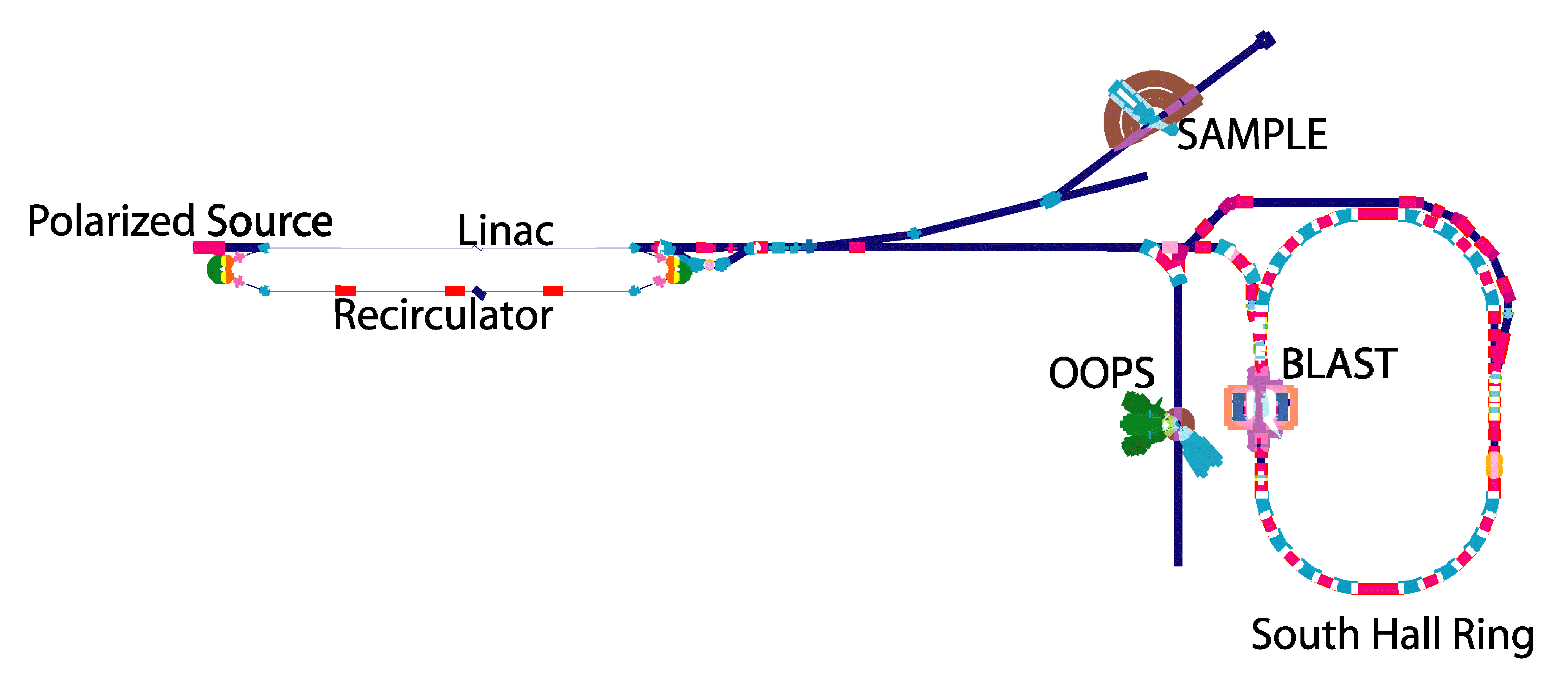 Polarized electrons were produced via photoemission. Light from a
fiber-coupled diode array laser system was circularly polarized
and directed on to a high-gradient-doped GaAs photocathode. The
laser was pulsed at rates up to 20 Hz and produced bunches of
electrons with 70% longitudinal polarization. A remotely
controlled half wave plate was inserted or removed to reverse the
polarisation. After the polarized source the electrons were
chopped and bunched into the 2856~MHz structure of the
accelerator. The accelerator is a linac capable of 500 MeV with
a recirculator which permits beam energies up to 1 GeV. There
are numerous experimental beam facilities but for BLAST the
accelerated beam was stacked in the south hall electron storage
ring, SHR. The storage ring follows a race track design with 16
dipoles and 190 m circumference. A single RF cavity in the ring
compensates for synchrotron losses and a Siberian snake is used
to maintain the longitudinal polarization of the stored beam at
the BLAST target location. Typical stored currents were over 200
mA with lifetimes greater than 25~minutes.
Polarized electrons were produced via photoemission. Light from a
fiber-coupled diode array laser system was circularly polarized
and directed on to a high-gradient-doped GaAs photocathode. The
laser was pulsed at rates up to 20 Hz and produced bunches of
electrons with 70% longitudinal polarization. A remotely
controlled half wave plate was inserted or removed to reverse the
polarisation. After the polarized source the electrons were
chopped and bunched into the 2856~MHz structure of the
accelerator. The accelerator is a linac capable of 500 MeV with
a recirculator which permits beam energies up to 1 GeV. There
are numerous experimental beam facilities but for BLAST the
accelerated beam was stacked in the south hall electron storage
ring, SHR. The storage ring follows a race track design with 16
dipoles and 190 m circumference. A single RF cavity in the ring
compensates for synchrotron losses and a Siberian snake is used
to maintain the longitudinal polarization of the stored beam at
the BLAST target location. Typical stored currents were over 200
mA with lifetimes greater than 25~minutes.
An atomic beam source, ABS, was used to produce a highly polarized internal target of either hydrogen (vector polarized) or deuterium (vector and tensor polarized). The ABS first dissociated the molecular gas and then utilising a series of focusing magnets in combination with radio frequency units through the Stern-Gerlach technique transported the desired nuclear spin state into an open ended tube, 60~cm long, aligned with the south hall ring's electron beam. This provided an isotopically pure, polarized target without entrance or exit windows for the BLAST experiment.
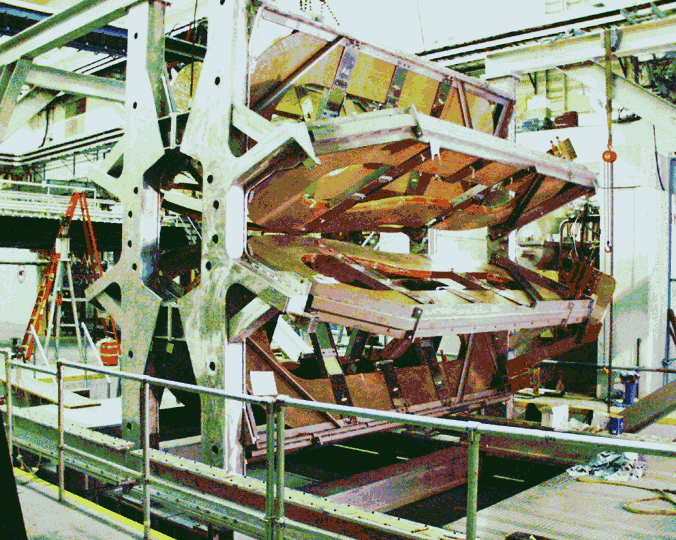 The BLAST detector is a
symmetric, general purpose detector surrounding the target.
The detector was based around a toroidal magnetic field produced
by an eight sector magnet shown at right before the detector
elements were installed. The top sector was used for the ABS and
target system. The bottom sector was used for the beamline
vacuum and target monitoring systems. The two opposing
horizontal sectors were instrumented with the detector elements.
The BLAST detector is a
symmetric, general purpose detector surrounding the target.
The detector was based around a toroidal magnetic field produced
by an eight sector magnet shown at right before the detector
elements were installed. The top sector was used for the ABS and
target system. The bottom sector was used for the beamline
vacuum and target monitoring systems. The two opposing
horizontal sectors were instrumented with the detector elements.
A schematic of the BLAST detector configuration is shown below The detector was mostly symmetric (except for the neutron detectors) and each sector contained:
- wire chambers which tracked the charged particles to determine the scattering angles and origin in the target cell. The wire chambers also determined the particle momenta by measuring the curvature of the track in the magnetic field.
- time-of-flight scintillators which measured the relative time of flight for the particles and were used in triggering the data acquisition electronics
- Cerenkov detectors which helped identify electrons by distinguishing them from fast pions, and
- neutron detectors to identify neutrons produced in the reactions studied.
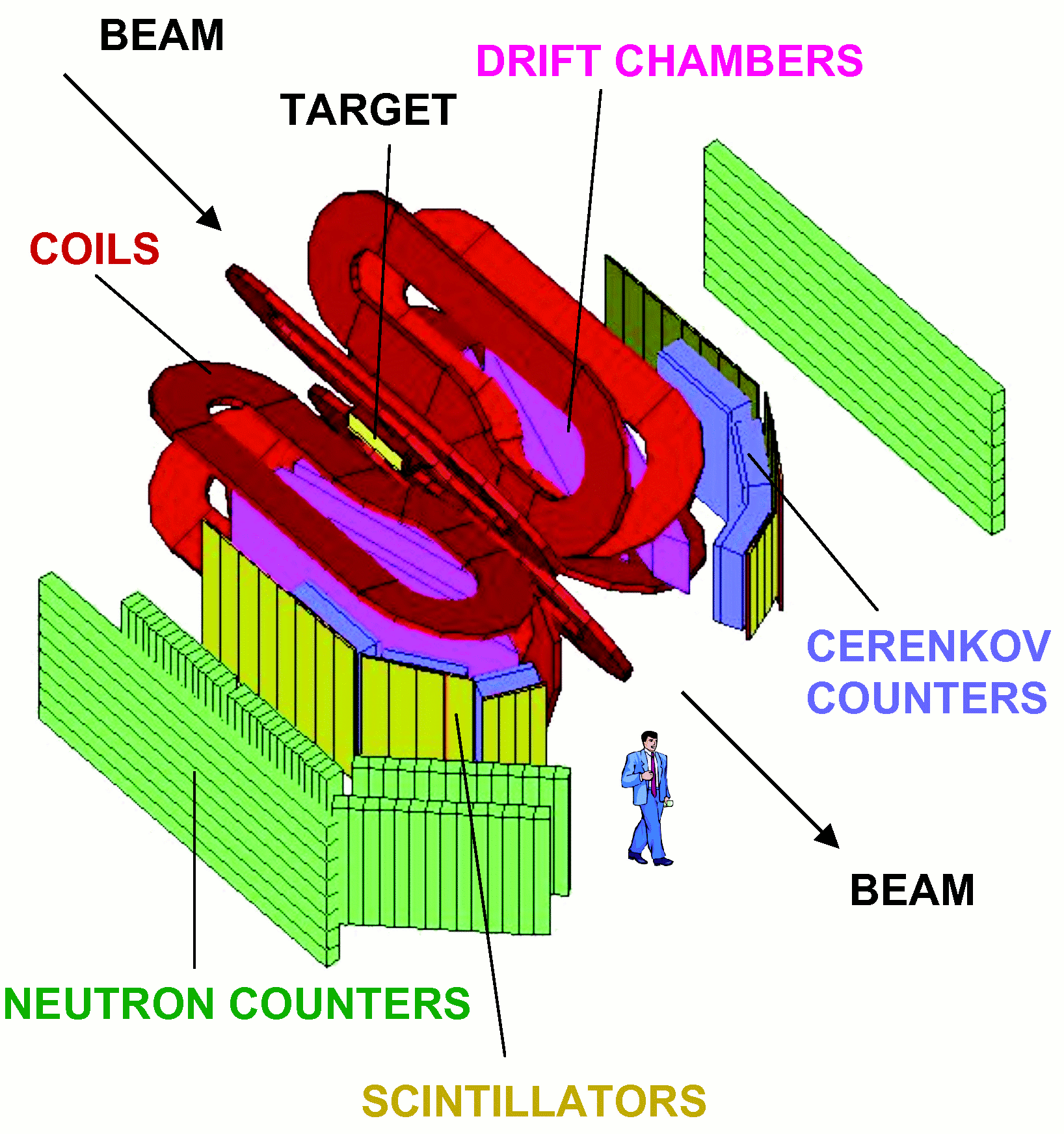
Not shown is the multi-level trigger and buffered data acquisition system which enabled the experiment to measure several reaction channels simmultaneously with little or no deadtime.
The experiment was also design to minimise systematic uncertainties by: reversing the beam polarisation with each fill (approximately every 15 minutes), and changing the target spin state every five minutes.
The entire experiment was automated and coordinated with the accelerator. When the stored current in the ring dropped below a set value the experiment would automatically stop data taking and put the detectors into a safe, standby state. The accelerator control system would then automatically dump the stored beam, reverse the electron source laser helicuty, and re-fill the storage ring. Once that was completed the detector control system would automatically turn the detector back to operational mode and resume data acquisition. This process repeated itself approximately every 15 minutes without operator intervention.
